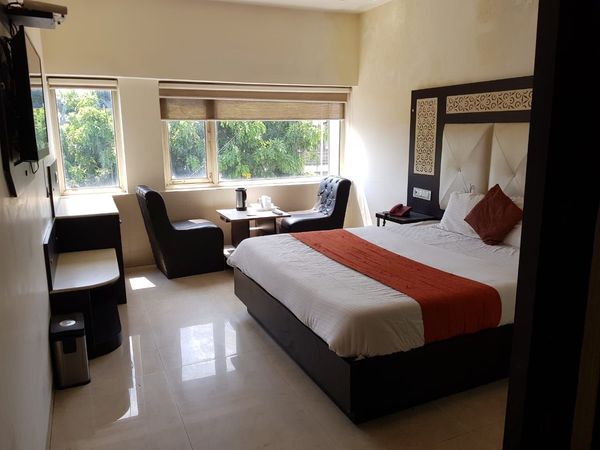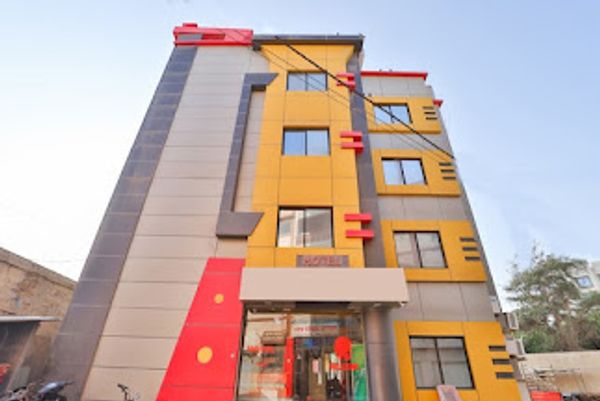Must-Visit Historical Sites in Ethiopia
 Mark Wood
23 Sep, 2025
10 mins read
11
Mark Wood
23 Sep, 2025
10 mins read
11

Ethiopia is one of the world’s oldest nations, often called the cradle of humanity. Its landscapes are not only striking but also dotted with remarkable historical landmarks that carry stories spanning thousands of years. From ancient rock-hewn churches to medieval castles, the country offers a cultural journey like no other. If you’re planning a trip, here are some of the must-visit historical sites in Ethiopia that should be at the top of your itinerary.
Lalibela: The Rock-Hewn Churches
Few places in the world compare to the spiritual and architectural wonder of Lalibela. Built in the 12th and 13th centuries under King Lalibela, these monolithic churches were carved directly into solid rock. There are 11 in total, each unique in design, with the Church of St. George being the most iconic. The craftsmanship, combined with the sheer devotion required to create them, makes Lalibela one of Ethiopia’s most important pilgrimage sites.
Visitors are often struck by the silence and sacred atmosphere surrounding these churches. Pilgrims dressed in white gather here year-round, and during festivals like Timket (Epiphany), the site becomes a vibrant celebration of Ethiopian Orthodox Christianity.
Aksum: The Ancient Kingdom
Located in northern Ethiopia, Aksum was once the center of a powerful empire that rivaled Rome and Persia. It’s said to have been the home of the Queen of Sheba and is closely tied to biblical legends. The city is best known for its towering obelisks, some of which date back nearly 1,700 years.
The most famous is the 24-meter-tall Obelisk of Axum, which was returned from Italy in 2005 after decades abroad. Aksum is also believed to house the Ark of the Covenant in the Chapel of the Tablet, although it remains off-limits to visitors. Even without access, the aura of mystery surrounding this site adds to its allure.
Gondar: The Camelot of Africa
Often referred to as the “Camelot of Africa,†Gondar is home to a series of royal castles built in the 17th century by Emperor Fasilides and his successors. The UNESCO-listed Fasil Ghebbi fortress is the centerpiece, featuring well-preserved palaces, banquet halls, and even a library.
What makes Gondar fascinating is the blend of architectural influences. Portuguese, Indian, and local Ethiopian styles converge to create a unique look that speaks to Ethiopia’s connections with the wider world. The annual Timket festival here is especially memorable, with thousands gathering at Fasilides’ Bath for a colorful reenactment of Christ’s baptism.
Harar: The Walled City
Harar is unlike any other place in Ethiopia. Situated in the eastern part of the country, this ancient city is often described as the fourth holiest city in Islam. With over 80 mosques and hundreds of shrines, Harar’s history is deeply spiritual. The old town is surrounded by thick walls and narrow, winding alleys that give it a distinctly medieval feel.
Beyond its religious significance, Harar is famous for its unique cultural practices, such as the tradition of feeding hyenas. At night, visitors can witness locals hand-feeding wild hyenas just outside the city walls, a practice that has been part of Harar’s culture for generations.
Tiya: The Enigmatic Stelae
A UNESCO World Heritage site, Tiya is home to more than 40 stone stelae scattered across a grassy plain. These upright stones are carved with mysterious symbols and human figures, the meanings of which remain debated by historians. Dating back to the 12th century, Tiya stands as a reminder of Ethiopia’s lesser-known but equally fascinating past.
Unlike the grand castles of Gondar or the majestic churches of Lalibela, Tiya offers a quieter, more reflective experience. It’s a place that sparks curiosity and leaves you wondering about the ancient civilizations that once thrived here.
Debre Damo Monastery
Perched on a flat-topped mountain in northern Ethiopia, Debre Damo Monastery is one of the most inaccessible yet rewarding sites to visit. Established in the 6th century, it is said to be one of the oldest Christian monasteries in Africa.
What makes the journey memorable is the climb itself. The only way to reach the monastery is by scaling a cliff with the help of a rope made from leather. Once at the top, visitors are rewarded with panoramic views and a glimpse into monastic life that has changed little over the centuries.
The Omo Valley Rock Art
While the Omo Valley is better known for its diverse tribes and cultural traditions, it also hides ancient rock art that tells stories of early human life. Painted on cave walls and boulders, these depictions of animals, hunters, and symbolic shapes date back thousands of years. They provide a fascinating link between Ethiopia’s prehistoric past and its present-day communities.
Exploring these sites gives you a sense of just how deep Ethiopia’s history runs, stretching back to the very dawn of civilization.
Bahir Dar and Lake Tana Monasteries
Bahir Dar, located on the shores of Lake Tana, is the gateway to the Blue Nile Falls and the lake’s ancient monasteries. Some of these monasteries date back to the 14th century and are adorned with colorful religious paintings and manuscripts.
Accessible by boat, monasteries like Ura Kidane Mehret and Kibran Gebriel offer a tranquil atmosphere away from the bustle of the mainland. They also provide an intimate look into Ethiopia’s Orthodox Christian heritage, with art that reflects centuries of devotion.
Why Ethiopia’s Historical Sites Stand Out
What sets Ethiopia apart from many other destinations is the authenticity of its heritage. Unlike heavily commercialized tourist sites, many of Ethiopia’s landmarks remain deeply connected to local communities and religious practices. Visiting these sites feels less like walking through a museum and more like stepping into living history.
Ethiopia’s geographical diversity also adds to the experience. From highland plateaus to arid deserts, the landscapes around each site are as breathtaking as the landmarks themselves. Whether you’re wandering the castles of Gondar, climbing to Debre Damo, or marveling at Lalibela’s rock-hewn churches, the journey is always as rewarding as the destination.
Planning Your Visit
If you’re inspired to explore these historical treasures, planning is key. Transportation between regions can take time, so it’s worth mapping out your route carefully. Internal flights are available, but road trips also offer a chance to see the countryside up close.
Another important step is ensuring your travel documents are in order. Many travelers benefit from consulting an Ethiopia Tourist Visa guide before their trip to understand entry requirements and make the process smoother. With proper preparation, your journey will be both enriching and stress-free.
Final Thoughts
Ethiopia is a land where history is not just preserved in monuments but lived daily by its people. From the biblical legends of Aksum to the medieval castles of Gondar and the spiritual rock-hewn churches of Lalibela, every corner tells a story that adds depth to your travels.
For history lovers, adventurers, and cultural explorers alike, Ethiopia is a destination that leaves a lasting impression. Visiting its historical sites is more than sightseeing—it’s a chance to walk in the footsteps of ancient civilizations and connect with a heritage that continues to shape the present.
Written By:
Mark Wood



Hotels at your convenience
Now choose your stay according to your preference. From finding a place for your dream destination or a mere weekend getaway to business accommodations or brief stay, we have got you covered. Explore hotels as per your mood.





